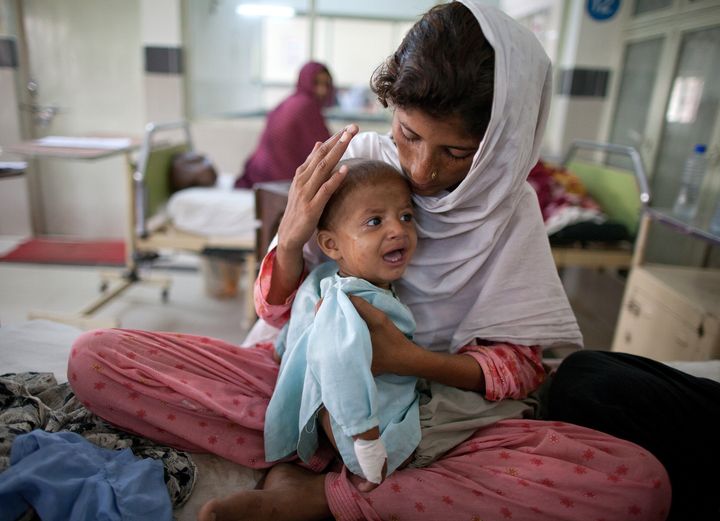
* Launches 10-year action plan against twin killers
* Aims to halt 2 million child deaths a year by 2025
* Ambitious plan to cost $6 billion over decade
By Stephanie Nebehay
GENEVA, April 12 (Reuters) - Child deaths from pneumonia and severe diarrhoea, mainly among the poor in Africa and South Asia, could be virtually eliminated by 2025 under an "integrated" strategy that includes better sanitation and newer vaccines, U.N. agencies said on Friday.
The 10-year action plan, estimated to cost $6.0 billion, aims to stop 2 million children under the age of five dying each year from the killer diseases, they said.
"We believe the targets set within this plan are achievable and actually are achievable over the next decade," Elizabeth Mason, director of maternal, newborn, child and adolescent health at the World Health Organization, told a news briefing.
"We are looking at targets for ending preventable child deaths from pneumonia and diarrhoea by 2025," she said.
About 2 million children under the age of five die each year from the two diseases, among 6.9 million killed by causes including malaria, according to the WHO and U.N. Children's Fund (UNICEF).
"Children are dying because services are provided piecemeal and those most at risk are not being reached," they said.
The goal is to reduce combined mortality from pneumonia and severe diarrhoea to fewer than 4 deaths per 1,000 live births by 2025, against 20 currently. The hope is to totally eliminate such deaths by 2035, they said.
AMBITIOUS PLAN
The U.N. plan is ambitious, calling for 90 percent of children under five to have access to antibiotics for pneumonia and life-saving oral rehydration salts for diarrhoea, tripling current access rates.
It seeks an "integrated approach", starting with standard ways to protect children from infections. These include breastfeeding, good nutrition, clean drinking water and sanitation, and reducing indoor air pollution by switching from charcoal to cleaner cooking methods.
It also relies on boosting the use of newer vaccines against pneumococcal bacteria, which causes about 20 percent of severe pneumonia cases, and rotavirus, which accounts for 28 percent of cases of severe diarrhoea but 50 percent of deaths from it.
GlaxoSmithKline and Merck are major makers of rotavirus vaccines against diarrhoea, sold as Rotarix and Rotateq, respectively. GSK and Pfizer make pneumococcal vaccines, Synflorix and Prevnar.
"We estimated the amount of funding would be just over $6 billion to 2025," Mason said. "If we look at it over a 10-year period, $600 million a year and divide it by the countries, for a relatively small amount you can actually get a huge impact."
The $6 billion would have to come from often strapped national health budgets, better use of existing funds and partners, including GAVI, a non-profit alliance that funds vaccination programmes for low-income countries.
The expectation is that as more countries introduce the newer vaccines, which cost more than routine immunisations, the prices will fall, also ensuring sustainability, Mason said.
"Pneumonia and diarrhoea are linked to poverty," said UNICEF's Marilena Viviani, noting that poor communities usually have limited access to clean drinking water and sanitation.
"We know that poor children, notably in South Asia and sub-Saharan Africa, are those most at risk of dying from pneumonia and diarrhoea and also less likely to be vaccinated," she said.
"Immunisation is one of the best known strategies and most cost-effective strategies to reach these children," she said.

